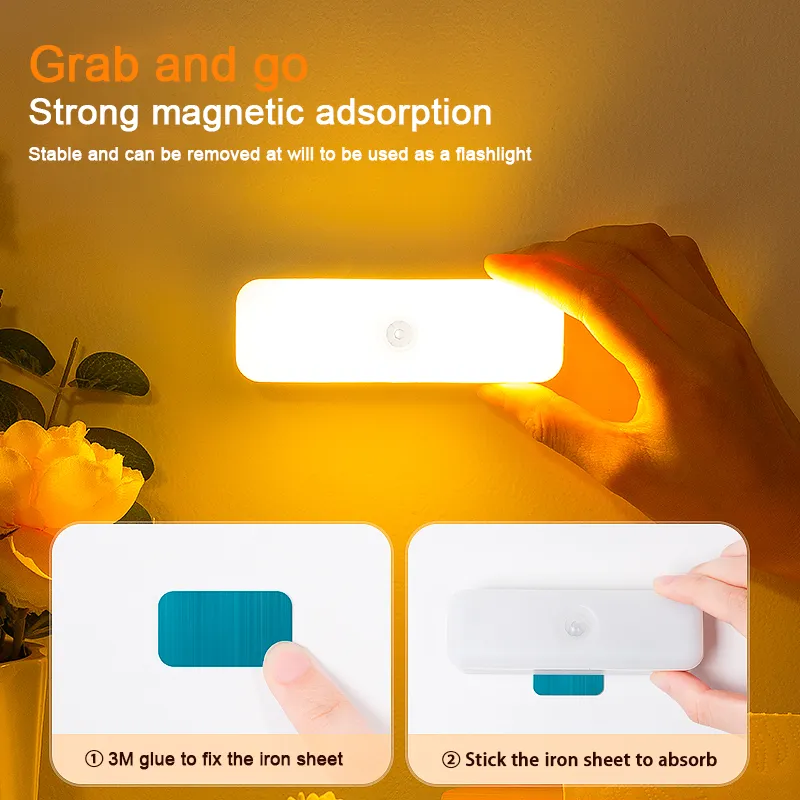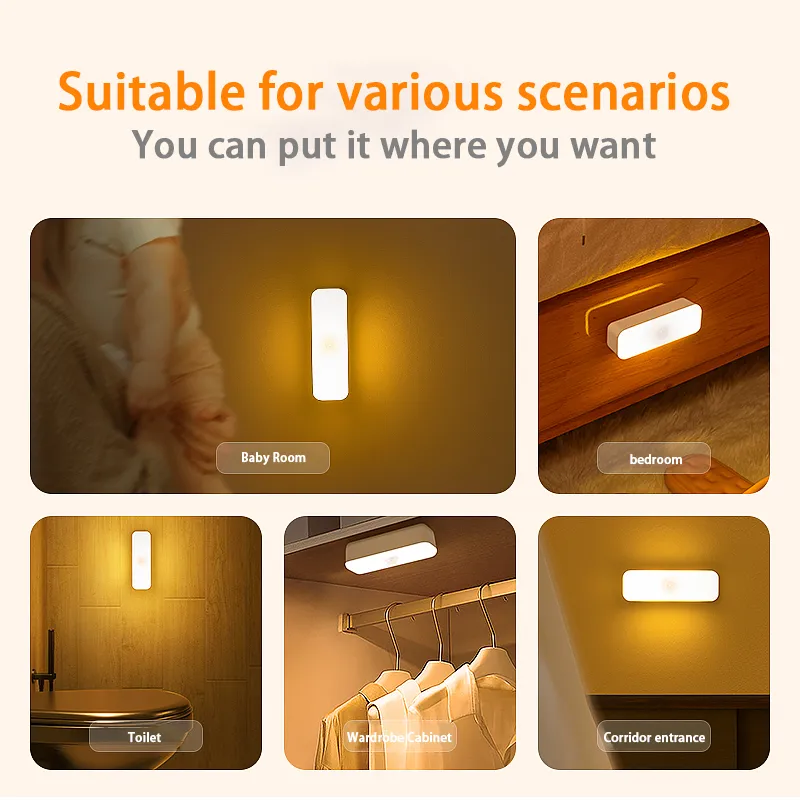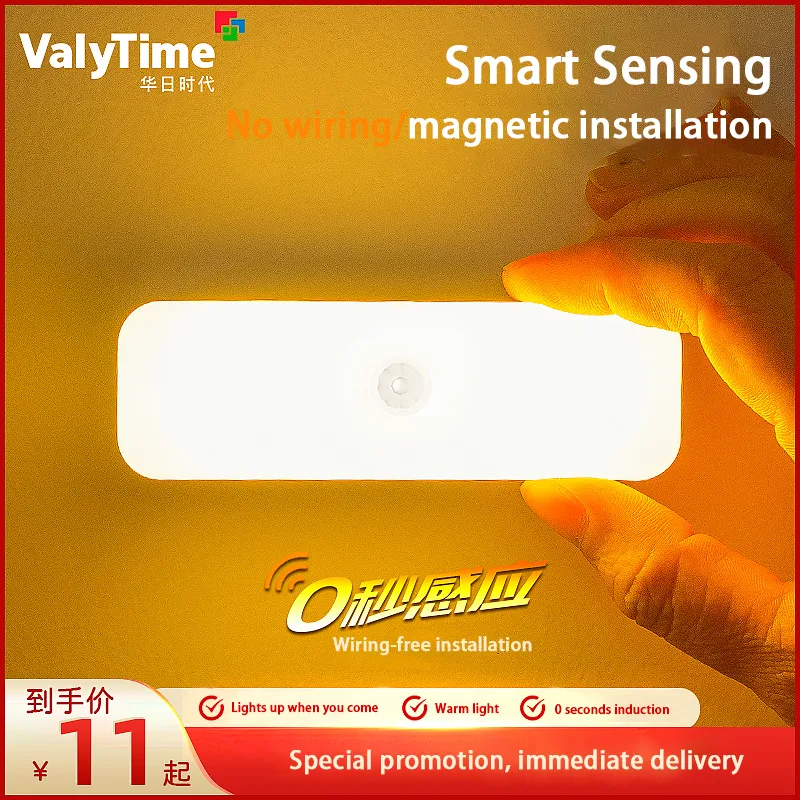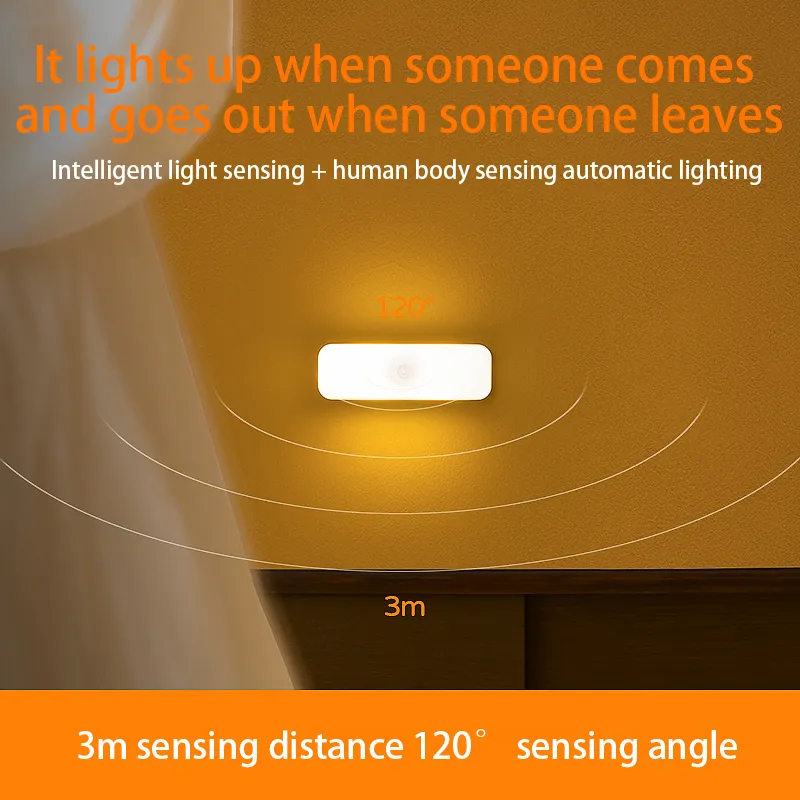Do I need an electrician to install my motion sensor night light?
Motion sensor night lights, as a convenient and safe lighting tool, are gradually becoming an important choice for nighttime lighting in homes, offices, and public areas. They not only improve safety but also offer advantages such as energy saving and convenience.
Many consumers face a common question after purchasing a motion sensor night light: Do I need an electrician to install it?
In fact, most modern motion sensor night lights do not require professional electrician installation. Many motion sensor night lights use built-in batteries and feature convenient magnetic backing or adhesive patch designs, allowing users to install them themselves without complicated tools or electrician support.
This article will answer questions about installing motion sensor night lights from multiple perspectives.

Motion Sensor Night Lights: Do You Know How They Work?
Motion sensor night lights combine motion detection technology and automatic lighting control, enabling them to automatically respond to human movement in the dark and provide necessary illumination.
1. Motion Sensor Principle
Motion sensor night lights typically use two common types of sensors: PIR (Parametric Infrared) sensors and microwave sensors.
• PIR Sensor: Detects changes in infrared radiation in the surrounding environment to determine the presence of objects (such as people). When a person or other warmer object enters the sensor's detection range, the change in infrared radiation is detected, triggering the light to turn on.
• Microwave Sensor: Utilizes the principle of microwave reflection to detect changes in microwave frequency caused by the movement of objects, triggering the light to illuminate.
2. Light Control Technology
In addition to motion sensors, motion activated night lights are also equipped with a light control sensing unit. This module determines whether the light needs to be turned on by measuring the brightness of the surrounding environment. In low-light conditions (such as at night or in dim environments), the motion sensor nightlight will respond to motion signals and automatically turn on.
3. Power Supply
Most modern motion activated night lights are powered by built-in batteries, meaning they do not need to be connected to the household power grid, thus reducing installation difficulty. This design also offers flexibility, allowing users to easily move or reposition the light fixture as needed. In addition to battery power, some high-end motion activated night lights also support USB charging or solar power.

Motion Sensor Nightlight: How is it installed?
"Do I need an electrician to install my motion sensor nightlight?" The answer to this question typically depends on the type of motion sensor nightlight and the installation requirements. For most modern motion activated night lights, users can easily install them without an electrician's help.
1. Built-in Battery Design
Most motion activated night lights on the market today are equipped with built-in batteries, meaning no power connection is needed, and users can freely choose the installation location. Built-in batteries usually have a long lifespan (ranging from 1 to 6 months) and can be used for extended periods by charging via USB or replacing the battery.
2. Magnetic Backing and Adhesive Patches
To improve ease of installation, many motion sensor nightlights use magnetic backing or adhesive patch designs. These designs eliminate the need for drilling or tools, allowing users to directly mount the light fixture on any metal surface or wall. The specific steps are as follows:
• Magnetic Backing: The back of the motion activated night light is equipped with a strong magnet, allowing the light fixture to easily adhere to ferrous surfaces such as refrigerators and metal door frames.
• Adhesive Patches: Some nightlights feature strong adhesive, allowing users to easily attach them to walls, bedside tables, hallways, etc., making installation simple, quick, and requiring no professional skills.
3. No Electrician Required
Thanks to the built-in battery, magnetic backing, and adhesive patches, most users simply place the motion activated night light where illumination is needed, without any electrician assistance. For example, installing a nightlight in a stairwell, bathroom, bedroom, or hallway requires only choosing a suitable location and adjusting the angle.
For wall or ceiling installations, if the motion activated night light features a hook design or insert mounting, no electrician is needed; users can install it themselves. The simple hook design makes nightlight installation even easier, typically allowing users to operate it independently in home or office environments.

Traditional Lighting vs. Motion Sensor Nightlights: What are the differences in installation?
1. Traditional Lighting Fixture Installation Method
Traditional lighting fixtures typically require:
• Connection to the household power grid;
• Mounting to a wall or ceiling;
• Drilling and wiring using tools;
• Finally, a qualified electrician completes the wiring safely.
This method does require specialized skills; otherwise, wiring errors or safety hazards can easily occur.
2. Design Concept of Motion Sensor Nightlights
Unlike traditional lighting fixtures, the core design principles of motion activated night lights are "simplicity" and "flexibility."
• Most are powered by built-in batteries, eliminating the need for power grid connection;
• Installation typically involves magnetic backing or adhesive patches, requiring no drilling or screws;
• Users simply place or attach it to the area requiring illumination.
Therefore, installing motion sensor nightlights does not require a professional electrician.
Motion Detector Night Lights: When is Electrician Installation Required?
While most motion detector night lights do not require electrician installation, in certain special circumstances, an electrician's intervention may still be necessary.
1. Fixed Power Supply Connection
If the motion activated night light uses a fixed power supply (e.g., directly connected to the home power grid), an electrician is required for installation. This type of installation typically involves specialized operations such as cable routing, socket installation, and power connection to ensure the safe use of the light fixture. In this case, the electrician's expertise ensures that the connections comply with electrical safety standards, preventing malfunctions or safety hazards due to electrical issues.
2. Scenarios Requiring Multiple Light Fixtures
For large areas (such as shopping malls, long corridors, or large offices), if users want to install multiple motion sensor nightlights and manage or wire them through a central power system, an electrician is needed for wiring. This type of installation has higher requirements, involving electrical access and system integration. An electrician can assist in the entire process, ensuring all lights work collaboratively over a large area.
3. Special Functions and Custom Designs
In certain customized scenarios, such as motion detector night lights integrated into a smart home system, an electrician may be required for installation. In this case, the electrician can effectively connect the sensor nightlight to other smart devices (such as smart switches, voice assistants, etc.) and perform system debugging to ensure the collaborative operation and stability of the devices.

What are the advantages of motion sensor nightlights? — Practicality
Motion sensor nightlights have become an essential lighting tool in modern homes and public places due to their convenience, safety, and energy efficiency. Here are the main advantages of motion sensor nightlights:
1. Energy Saving and Environmental Protection
Motion detector night lights automatically turn on only when needed, greatly reducing energy waste and avoiding increased electricity bills from prolonged lighting. The built-in battery design means they are not reliant on the household power grid, making them energy-efficient and environmentally friendly.
2. Enhanced Safety
When walking at night, motion detector night lights illuminate immediately, providing light and preventing falls or collisions in dark environments. Safety is especially important in homes with many elderly people and children.
3. Flexible Installation and Relocation
Motion sensor nightlights are highly flexible due to the lack of power connection and complex installation steps. Users can easily adjust the installation location according to their needs, providing effective lighting whether at the bedside, in a hallway, or at the stairwell.
4. No Complex Operation Required
Even ordinary users without electrical experience can easily install motion detector night lights. Modern designs such as magnetic backing and adhesive patches simplify installation, eliminating the need for tools or specialized equipment.
Does installing a motion sensor nightlight require an electrician?
—No. Most commercially available motion sensor nightlights are battery-powered and come with magnetic backing or adhesive patches, allowing for direct installation. Installation is quick and easy; simply place, attach, or stick the light to the desired location.
Electrical installation may be required only when selecting specific wiring options, but this is not the standard practice for most motion detector night lights.
How does Huari manage sustainability in manufacturing?
Sustainability is integrated into our operations through ISO 14001 practices, energy-saving machinery, and waste reduction programs. We optimize raw material usage, reduce packaging volume, and invest in recyclable materials. Our LED products are designed to consume less energy and last longer, reducing environmental impact.
As an environmentally conscious factory, Huari Lighting balances responsible production with cost-efficient prices for global wholesale customers.
